Abstract
Rates of structural chromosome abnormalities were analyzed in 24,951 fetuses studied prenatally in which there were no grounds to suspect an inherited abnormality. In about one in 200 prenatal cytogenetic diagnoses, an unexpected structural abnormality was found. The observed rate was 5.3 per 1,000, of which 1.7 per 1,000 were unbalanced and 3.6 per 1,000 balanced. The rate of inherited abnormalities was 3.1-3.7 per 1,000 (0.4-0.9 per 1,000 for unbalanced abnormalities and 2.6-2.8 per 1,000 for balanced abnormalities). The rate of mutants in this series was, by contrast, 1.6-2.2 per 1,000 (0.8-1.2 per 1,000 for unbalanced abnormalities and 0.8-1.0 per 1,000 for balanced abnormalities). The rate of balanced Robertsonian translocation carriers was 0.6 per 1,000 (about 0.25 per 1,000 for mutants and 0.35 per 1,000 for inherited abnormalities), and for other balanced abnormalities, 3.0 per 1,000 (about 0.6 per 1,000 for mutants and 2.4 per 1,000 for inherited abnormalities). The rates of unbalanced Robertsonian translocations was about 0.1 per 1,000, almost all of which were mutants. For supernumerary rearrangements, the rate was 0.9 per 1,000 (about 0.4 per 1,000 inherited and 0.5 per 1,000 mutant). The rates of all unbalanced (nonmosaic) inherited abnormalities (4.0-5.2 per 10,000) were intermediate between higher rates estimated in all conceptuses (9.1-15.8 per 10,000) and rates observed in newborns (1.5-2.5 per 10,000). This trend is probably attributable to fetal mortality associated with unbalanced rearrangements. The rates of balanced (nonmosaic) inherited abnormalities (26.0-28.0 per 10,000), however, were considerably higher than the rates in all conceptuses (13-16.7 per 10,000) or in all live births (12.2-16.0 per 10,000). The major difference was in the rate of inversions. The use of "banding" methods in the studies of amniocentesis but not in most of the live births or abortus studies probably contributes to at least some of these differences. One trend in parental age among the inherited abnormalities was noteworthy. Paternal age was elevated for inherited balanced reciprocal structural abnormalities of paternal origin but not of maternal origin. With regard to sex ratio, there was a greater proportion of females than males among the unbalanced rearrangements both inherited and mutant. There was no obvious sex difference among the balanced rearrangements.
Full text
PDF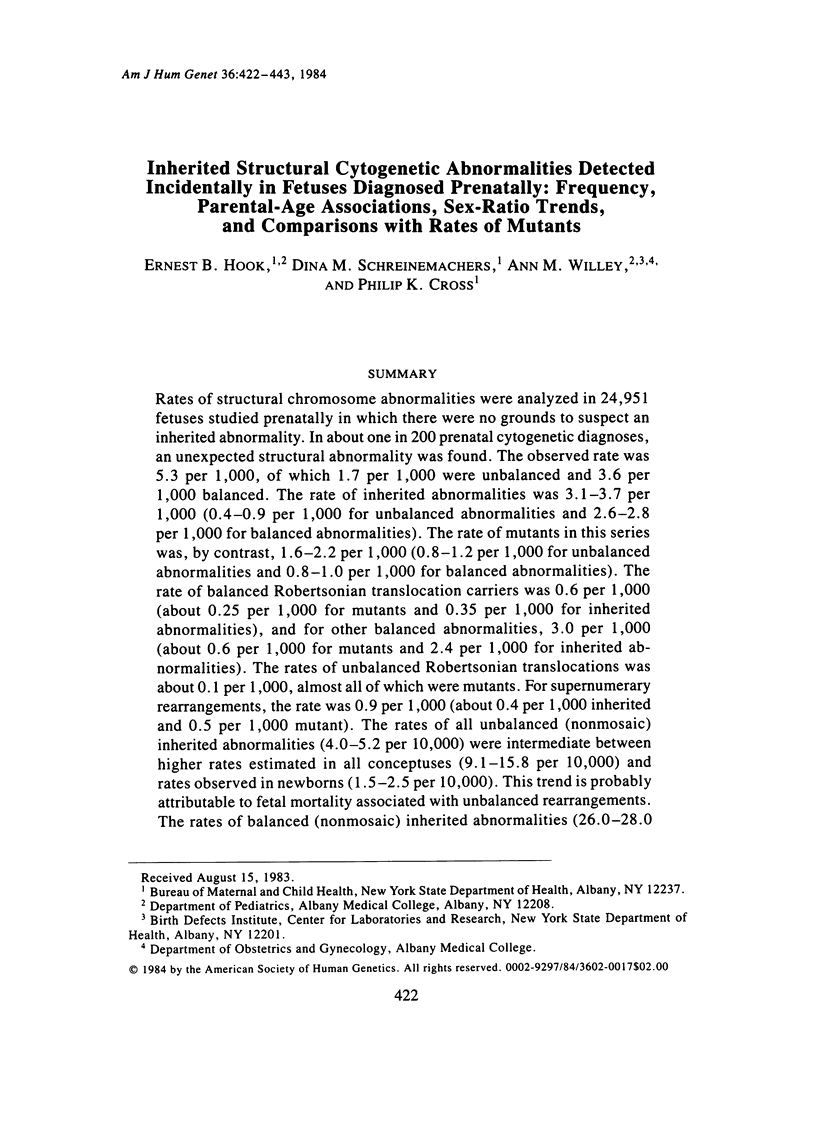
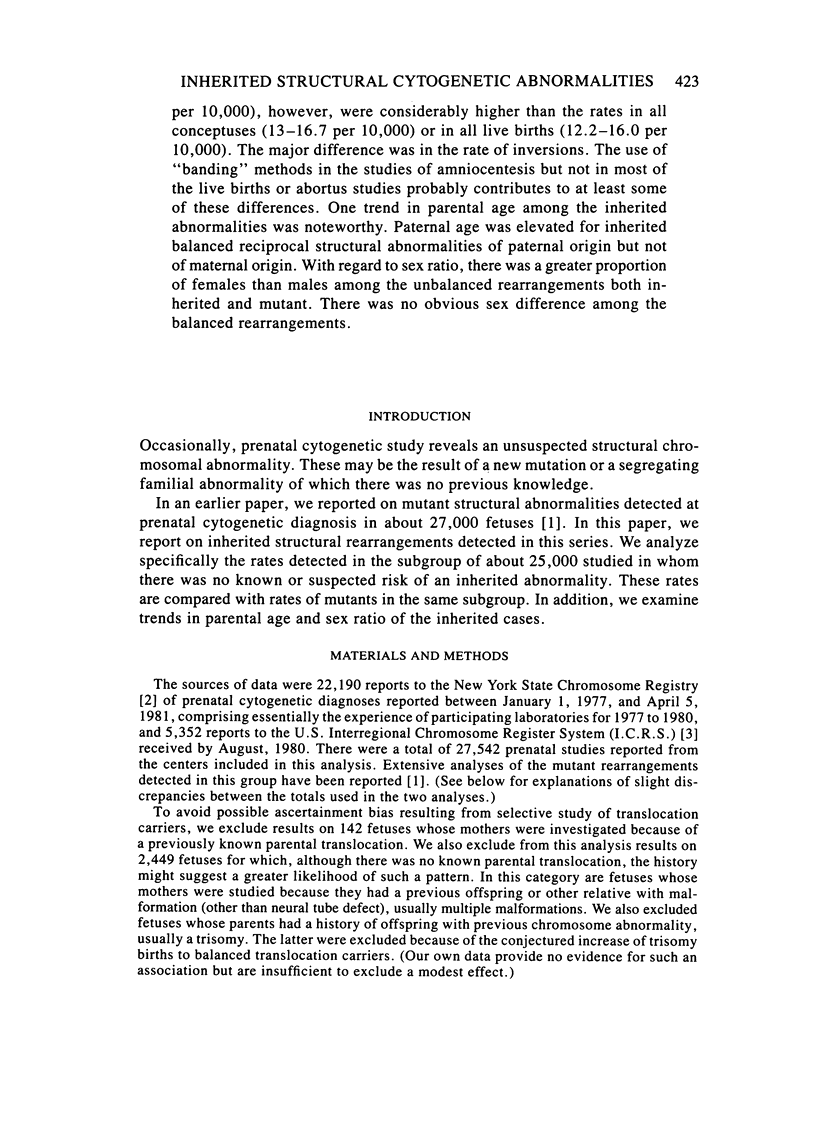
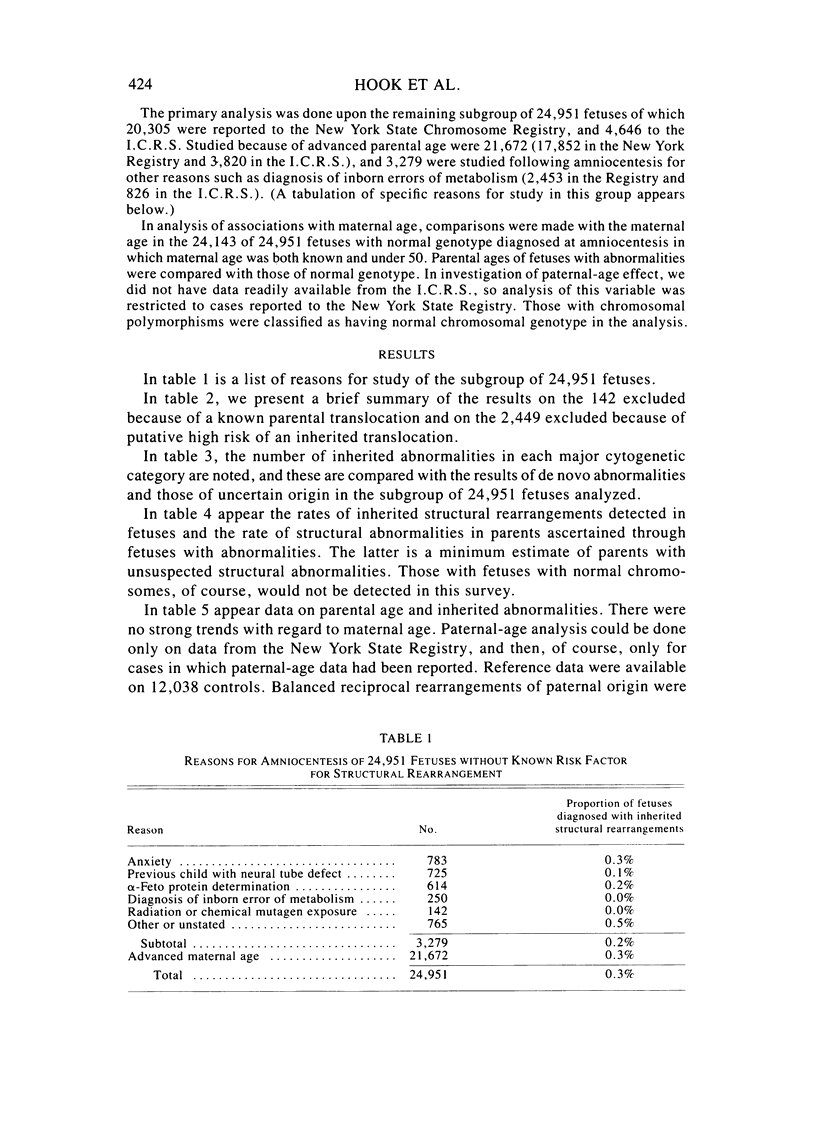
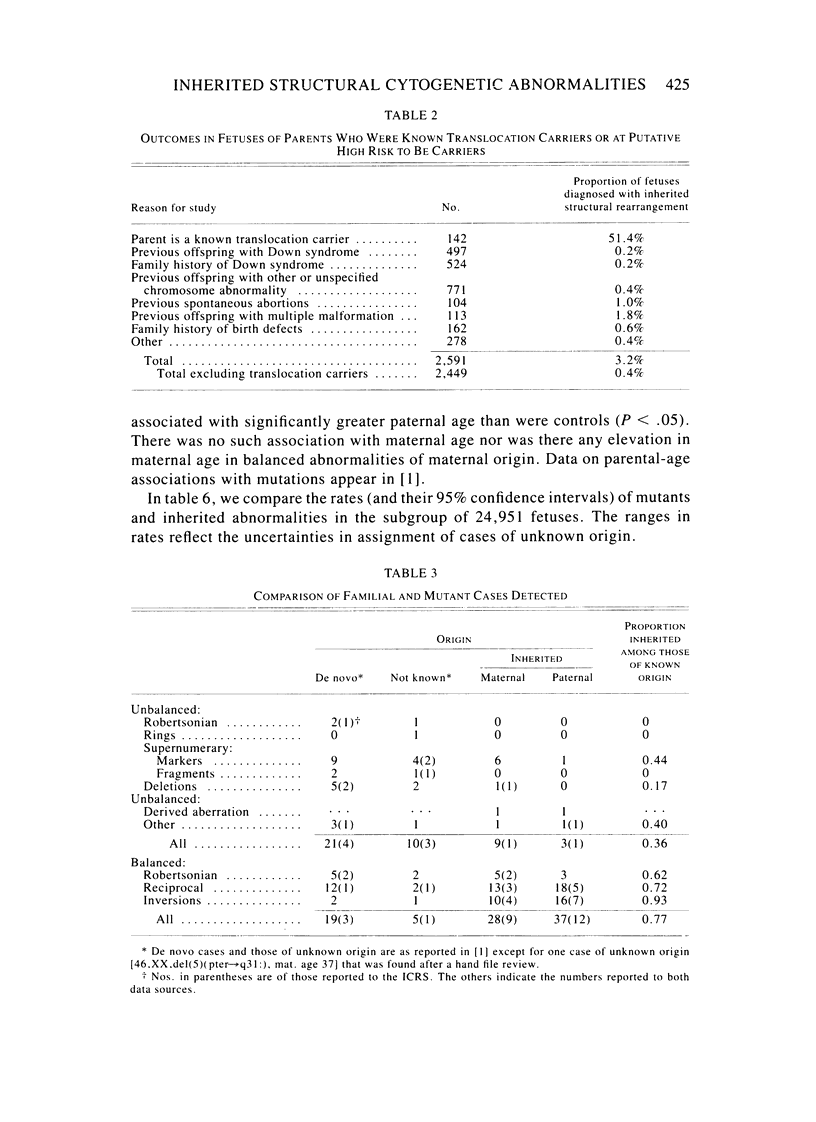

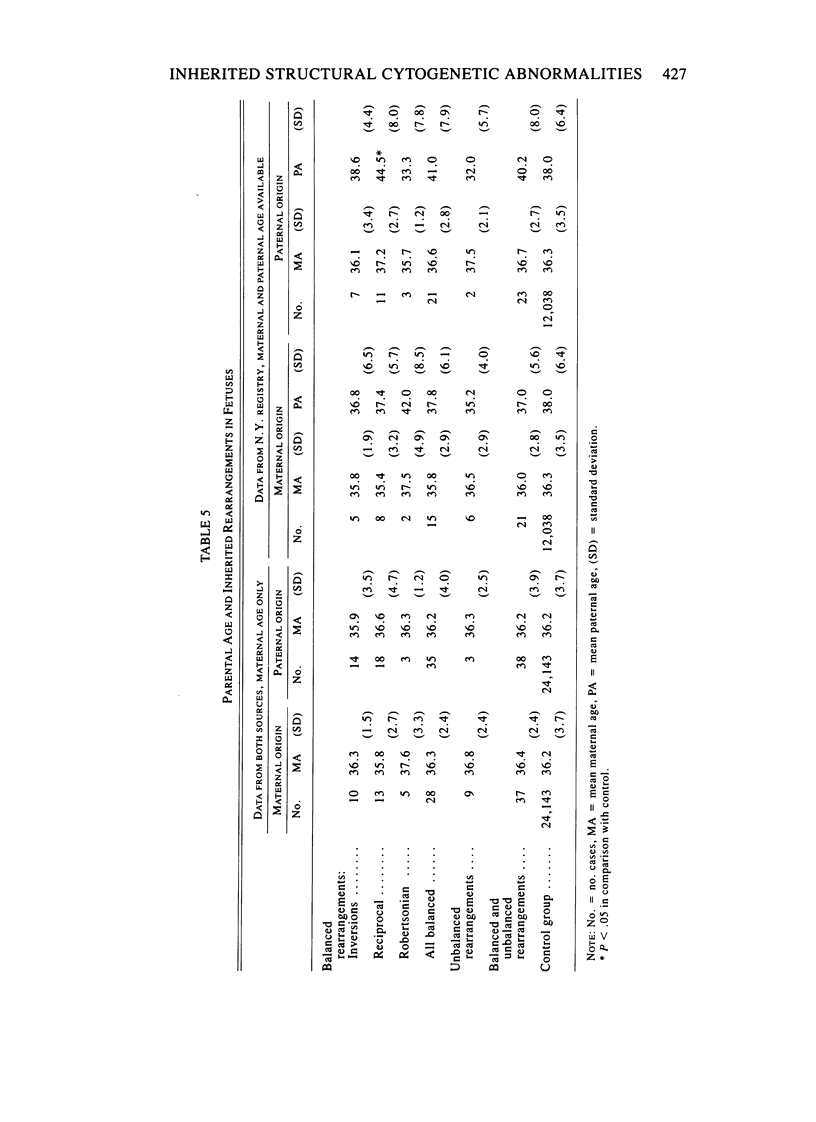
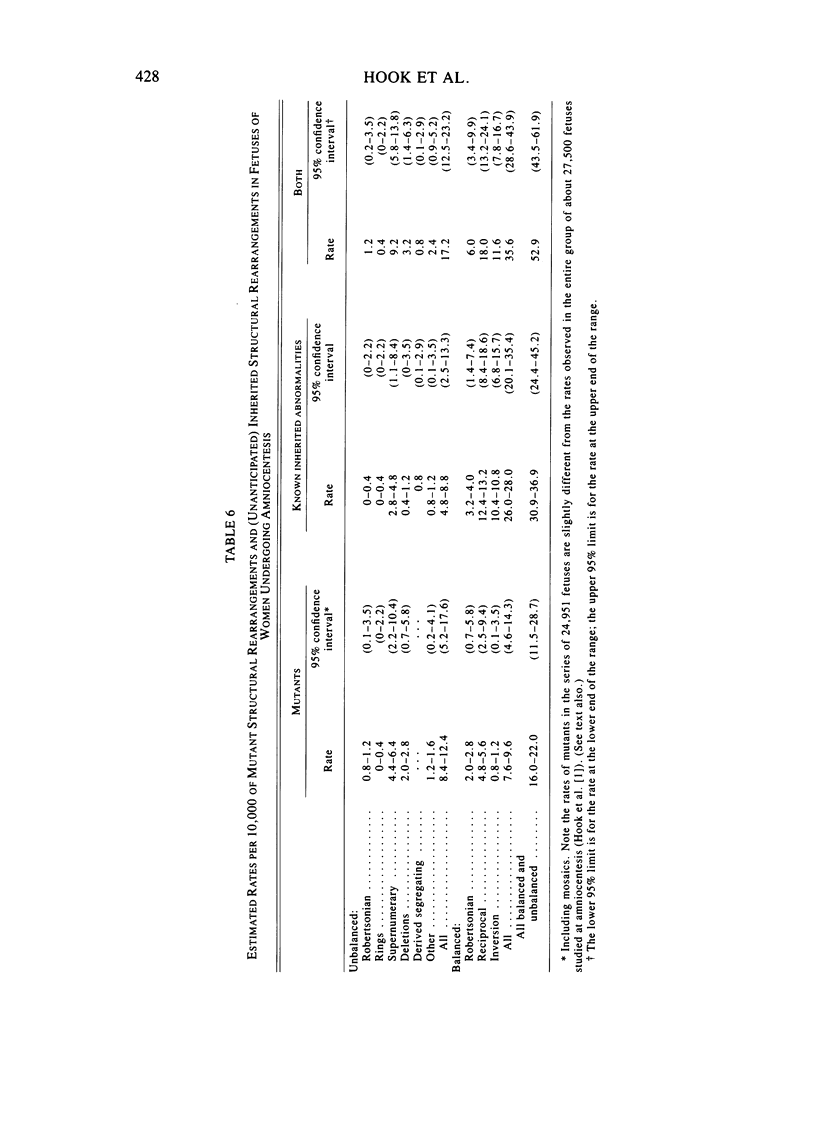
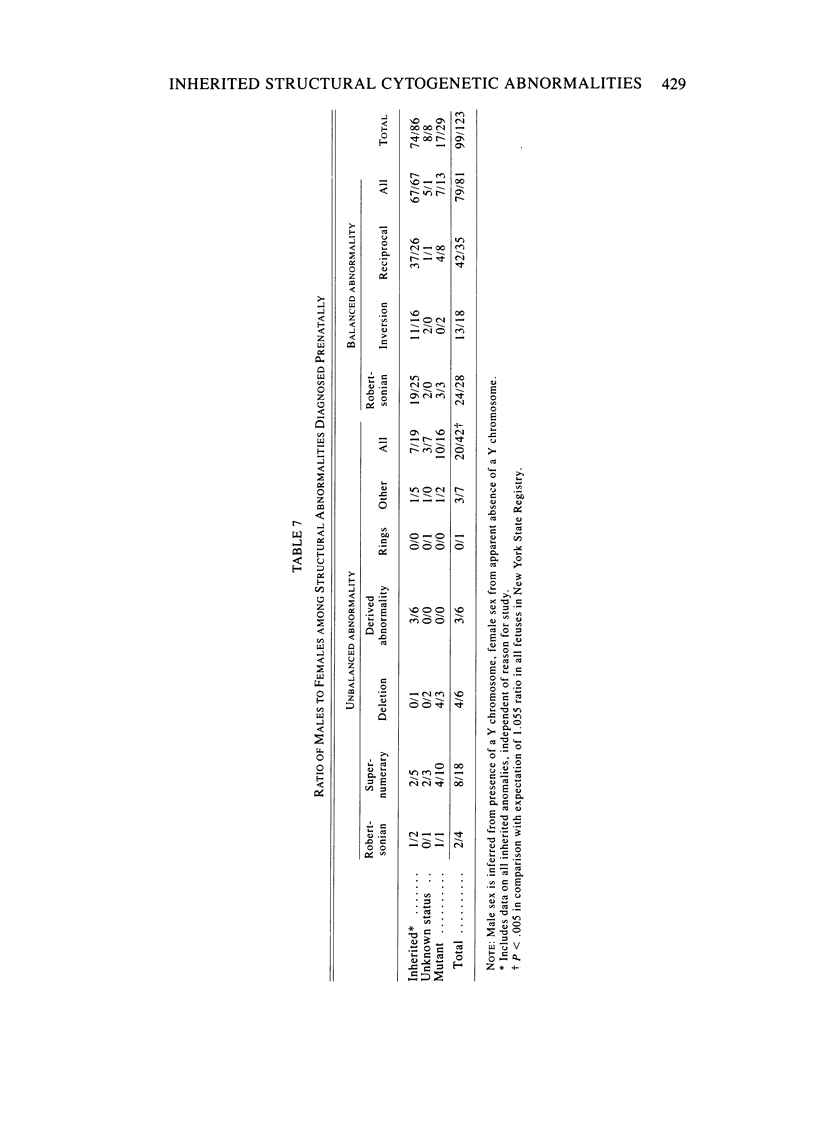
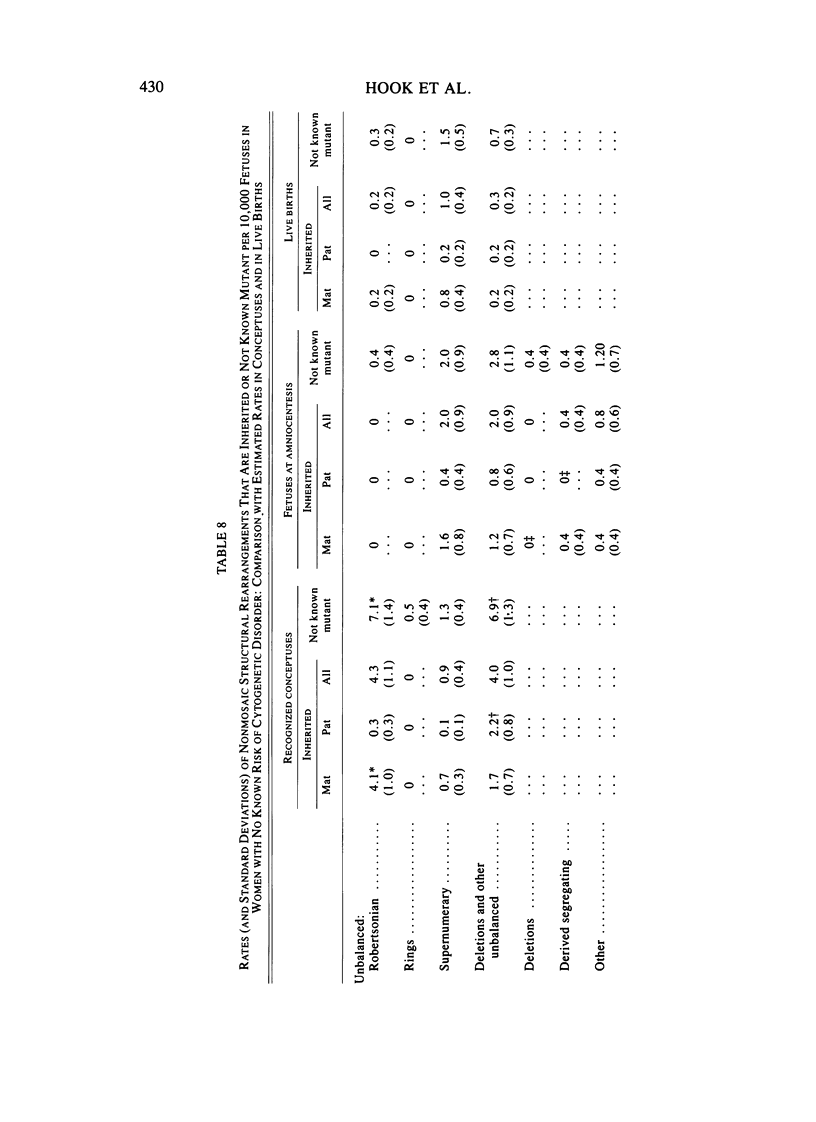
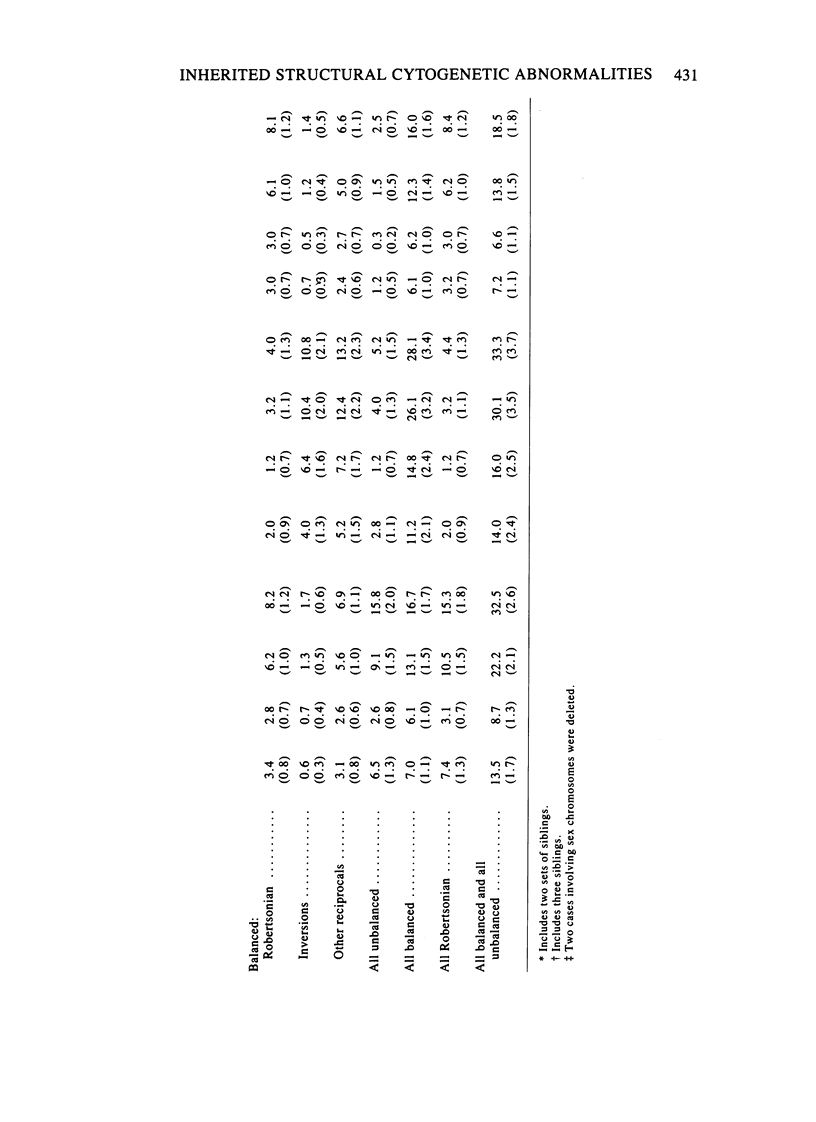
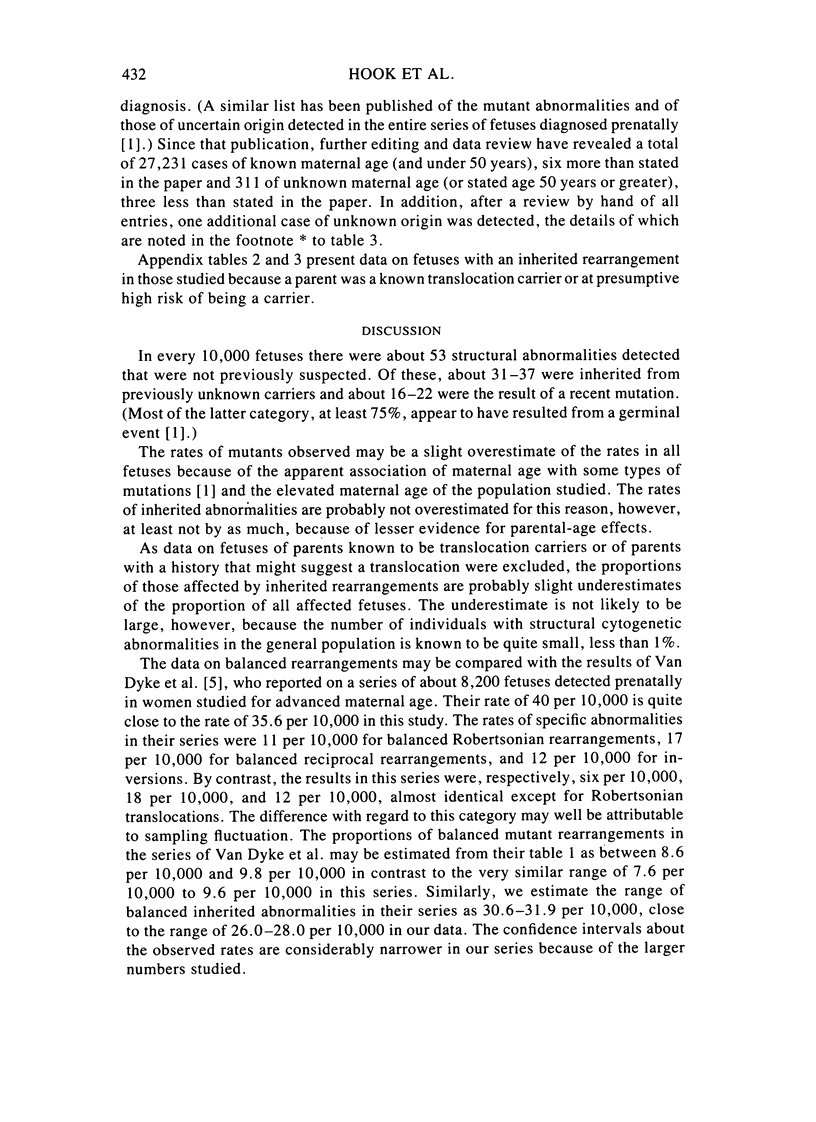
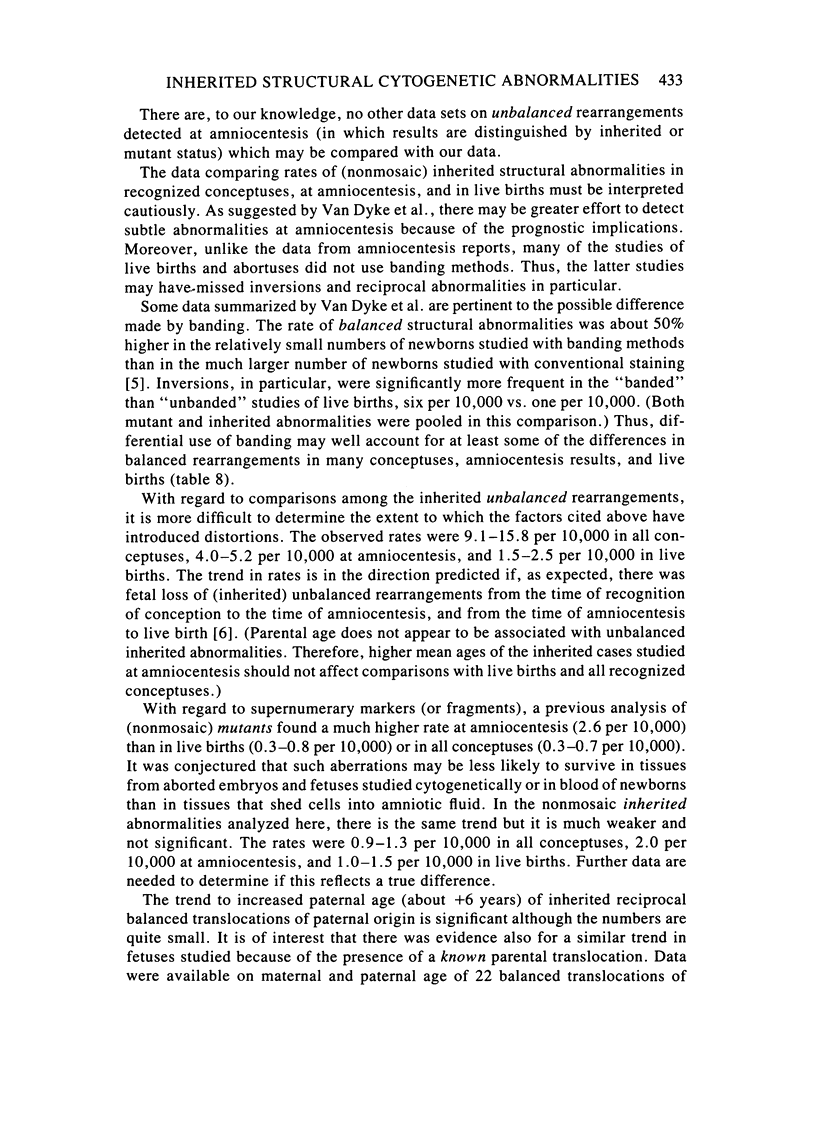
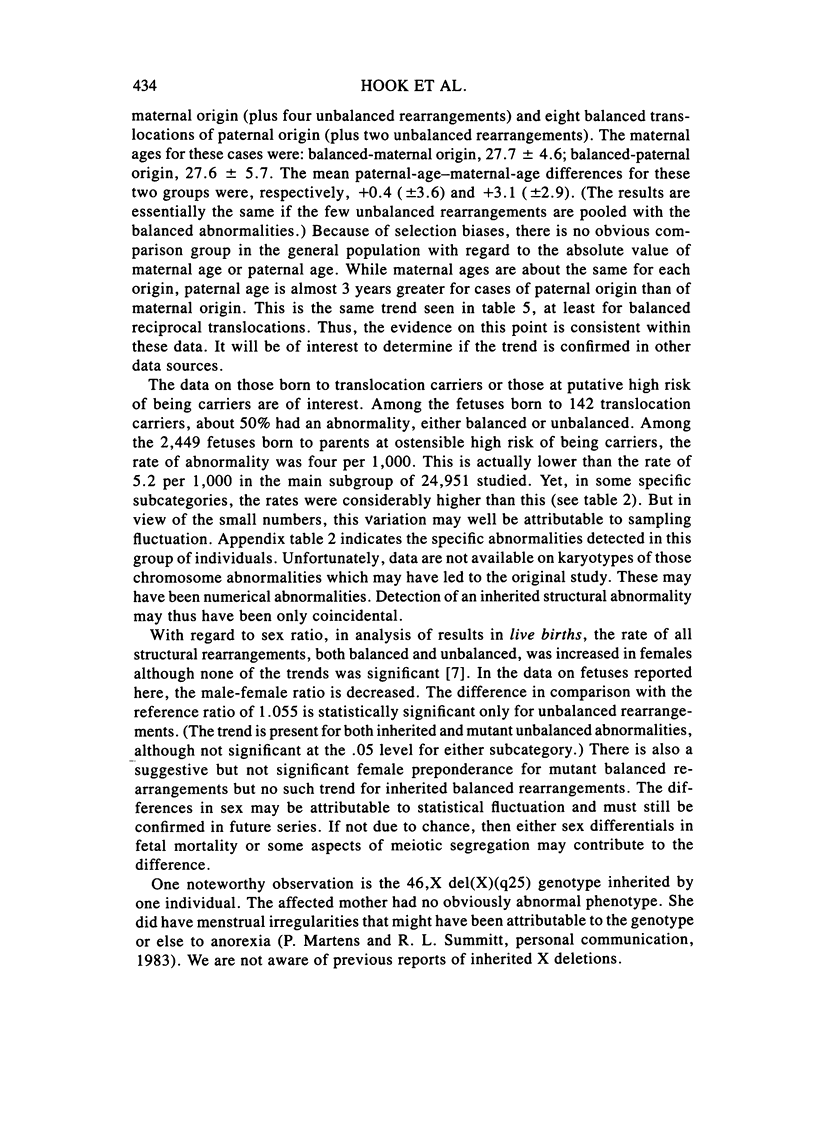
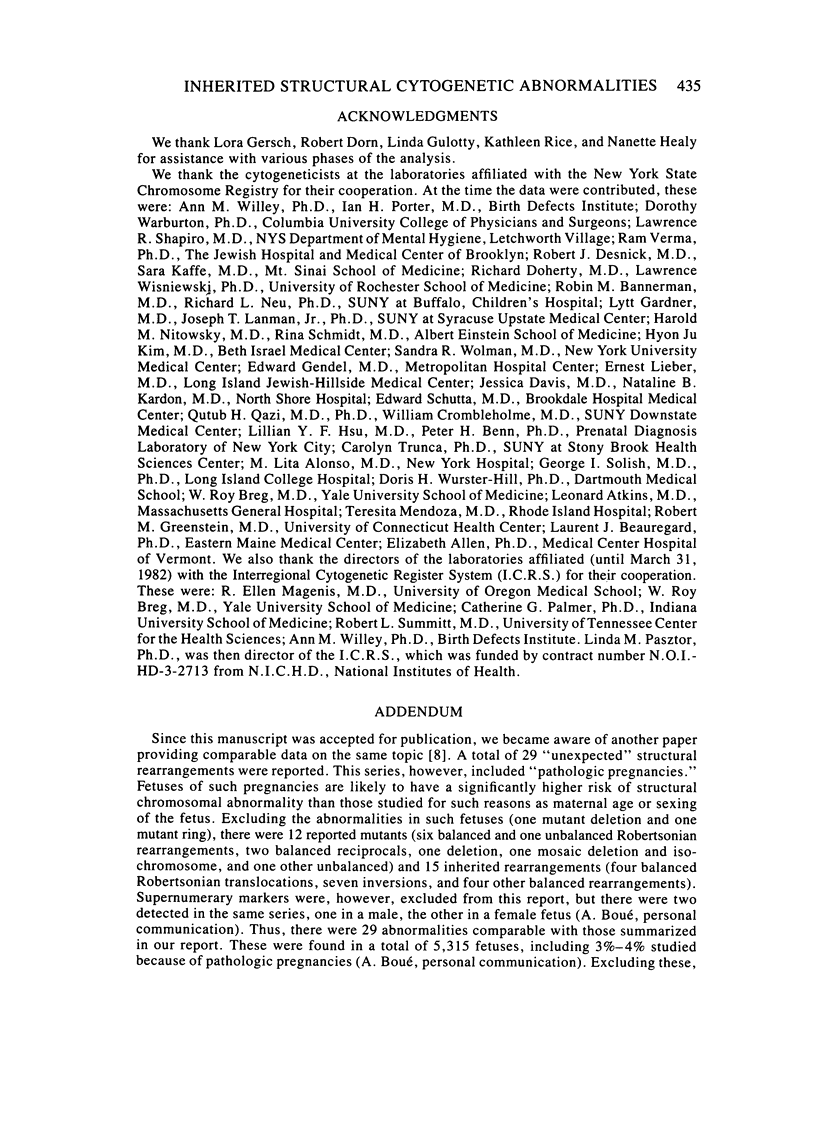
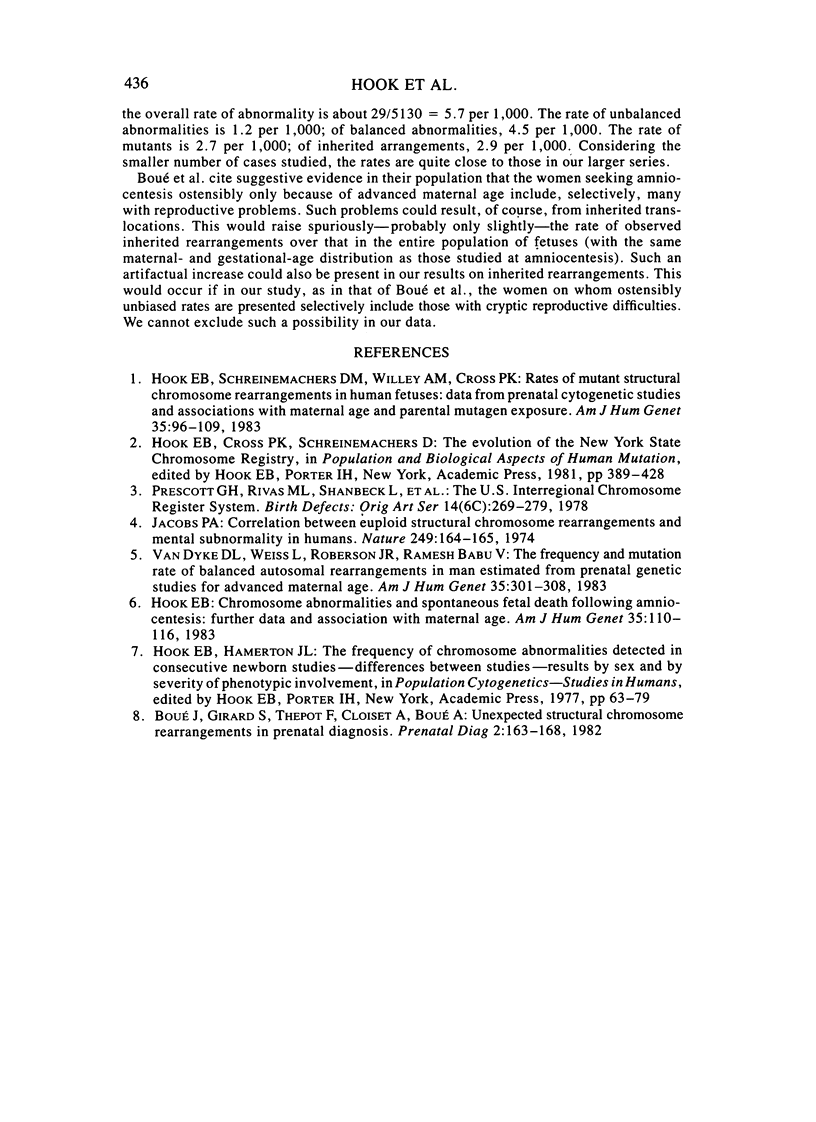
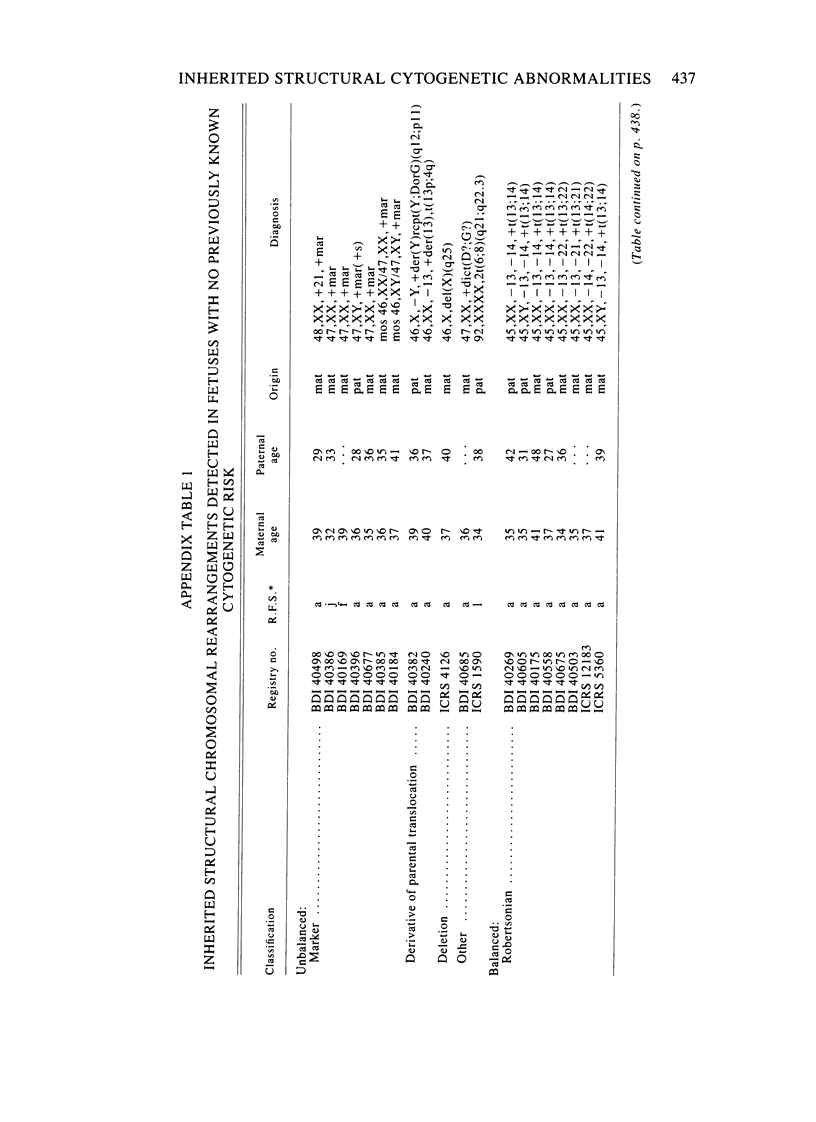

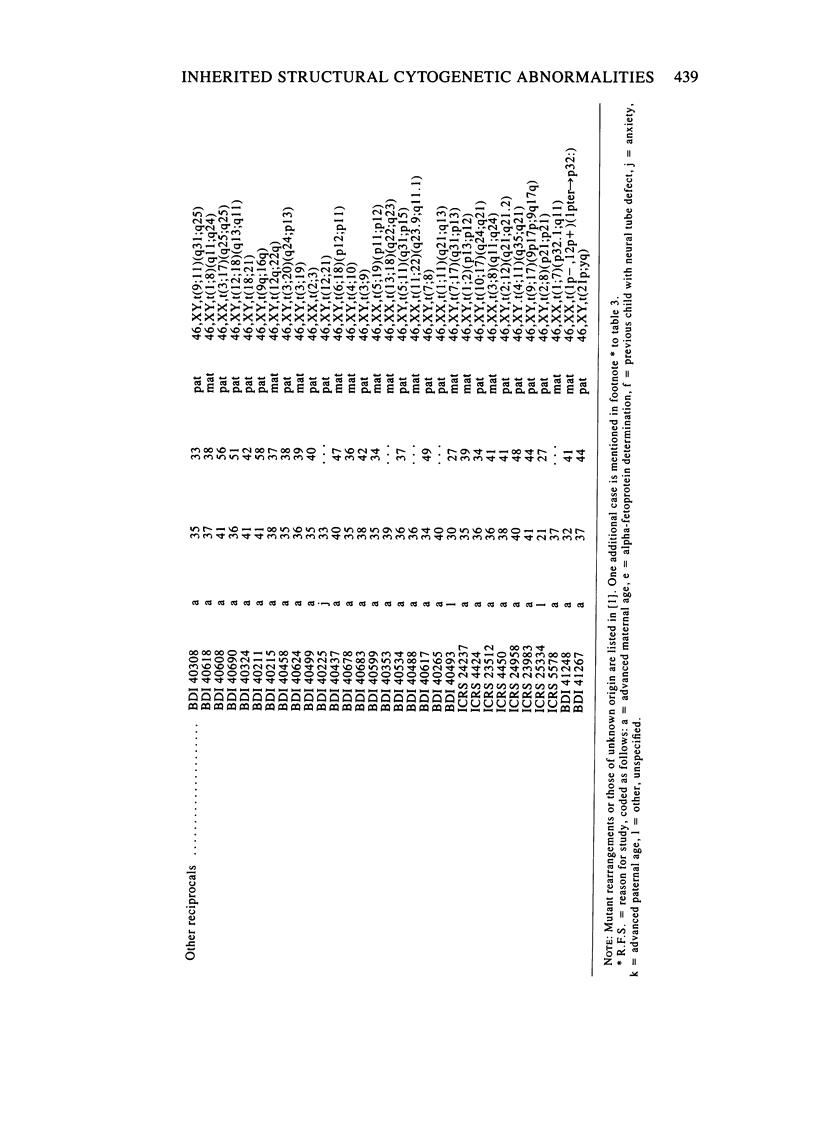

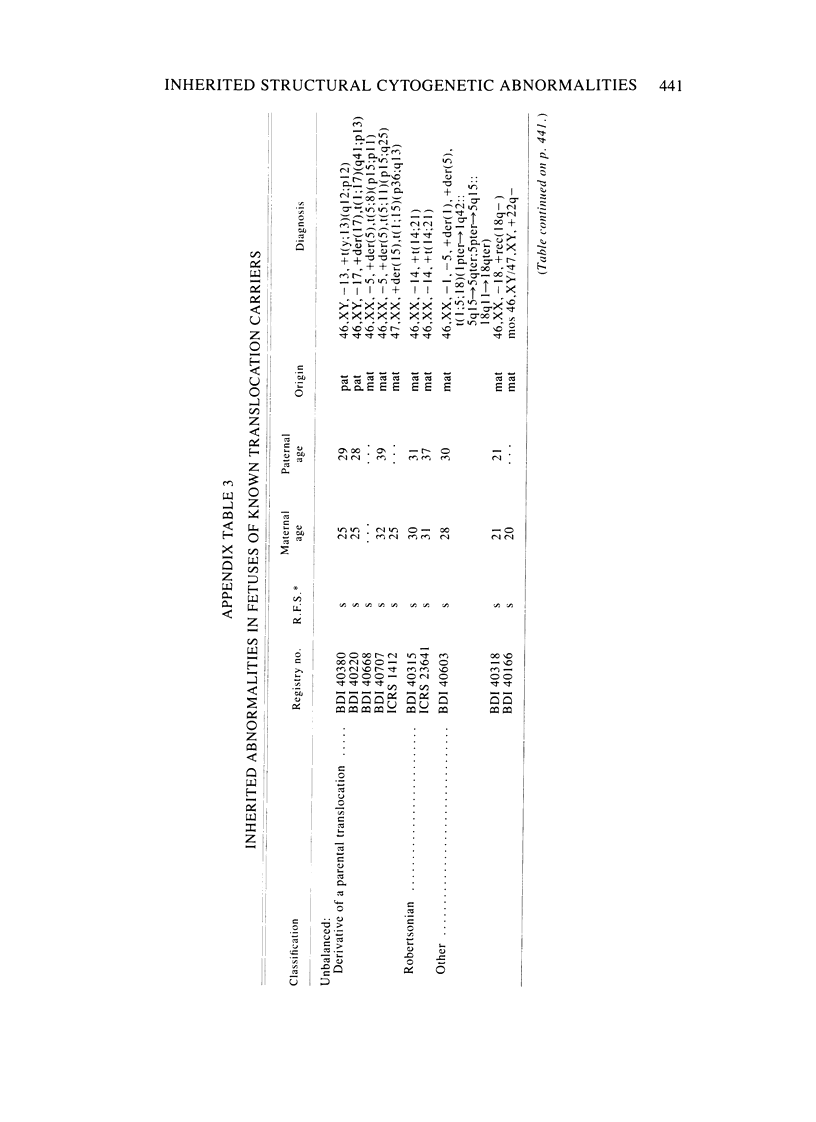
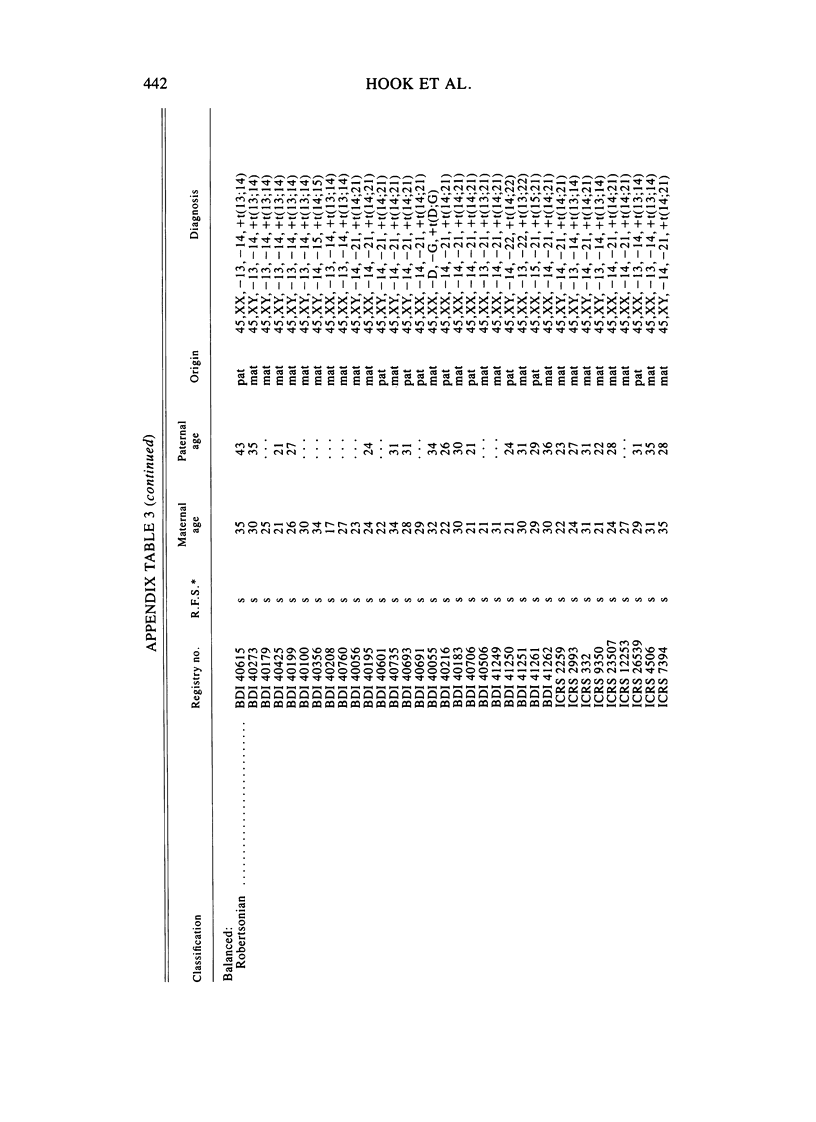
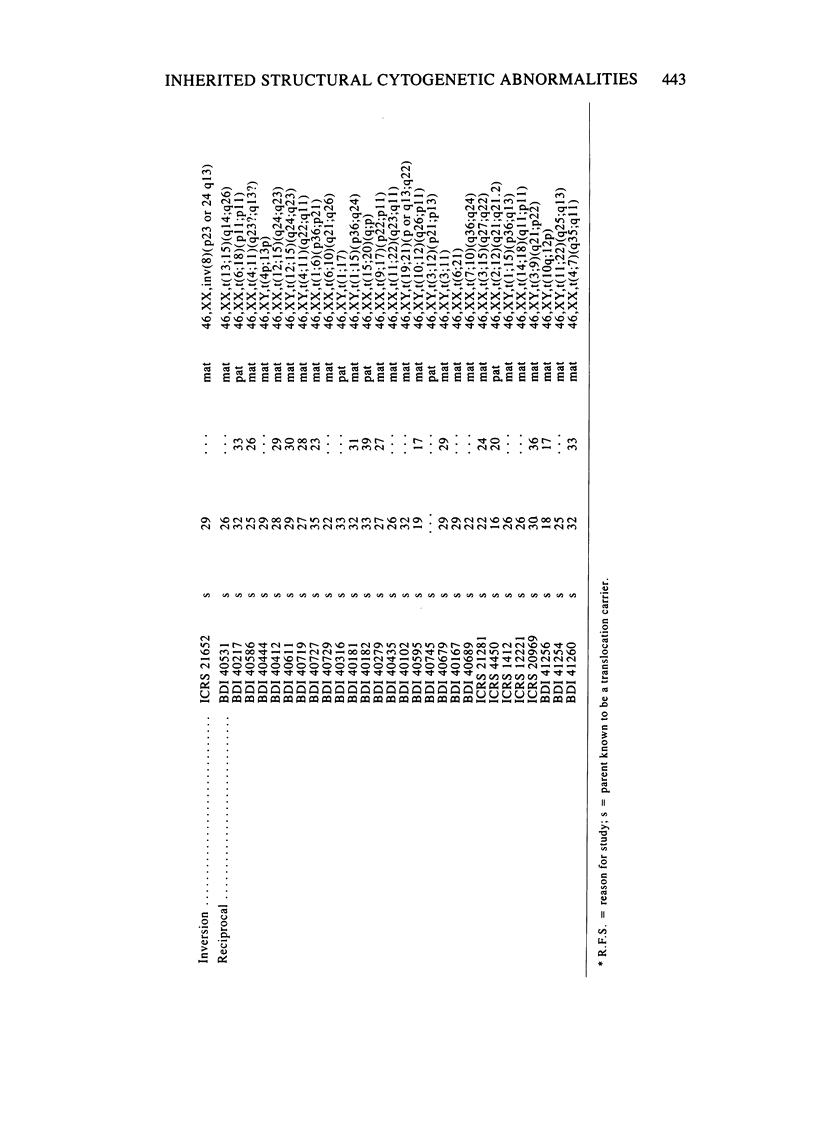
Selected References
These references are in PubMed. This may not be the complete list of references from this article.
- Boué J., Girard S., Thépot F., Choiset A., Boué A. Unexpected structural chromosome rearrangements in prenatal diagnosis. Prenat Diagn. 1982 Jul;2(3):163–168. doi: 10.1002/pd.1970020304. [DOI] [PubMed] [Google Scholar]
- Hook E. B. Chromosome abnormalities and spontaneous fetal death following amniocentesis: further data and associations with maternal age. Am J Hum Genet. 1983 Jan;35(1):110–116. [PMC free article] [PubMed] [Google Scholar]
- Hook E. B., Schreinemachers D. M., Willey A. M., Cross P. K. Rates of mutant structural chromosome rearrangements in human fetuses: data from prenatal cytogenetic studies and associations with maternal age and parental mutagen exposure. Am J Hum Genet. 1983 Jan;35(1):96–109. [PMC free article] [PubMed] [Google Scholar]
- Jacobs P. A. Correlation between euploid structural chromosome rearrangements and mental subnormality in humans. Nature. 1974 May 10;249(453):164–165. doi: 10.1038/249164a0. [DOI] [PubMed] [Google Scholar]
- Prescott G. H., Rivas M. L., Shanbeck L., Macfarlane D. W., Wyandt H. E., Breg W. R., Lubs H. A., Magenis R. E., Summitt R. L., Palmer C. G. The Interregional Cytogenetic Register System (ICRS). Birth Defects Orig Artic Ser. 1978;14(6C):269–279. [PubMed] [Google Scholar]
- Van Dyke D. L., Weiss L., Roberson J. R., Babu V. R. The frequency and mutation rate of balanced autosomal rearrangements in man estimated from prenatal genetic studies for advanced maternal age. Am J Hum Genet. 1983 Mar;35(2):301–308. [PMC free article] [PubMed] [Google Scholar]


